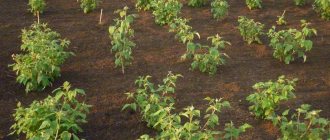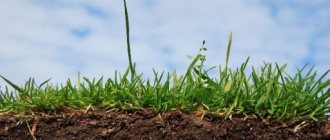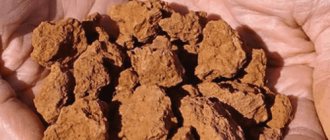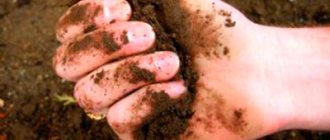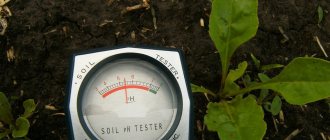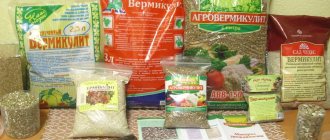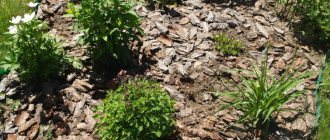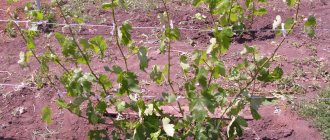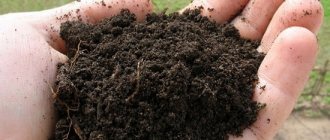What does soil fertility and its increase depend on? Can we gardeners answer this question? It is no secret that the soil is depleted and its properties are deteriorating. The application of mineral fertilizers, as practice has shown, does not solve the problem of fertility. Nutrients are not balanced, some of them are absorbed by weeds. How to make the soil fertile on your site?
Soil is an incredibly complex substance. It has physical and chemical properties that allow it to support not only the life of a variety of plants, but the life of hundreds of thousands of different insects, worm-like creatures, and microorganisms. She breathes, she interacts with her environment, she can even cleanse herself, grow over time.
Fertility as a reflection of the interaction and mutual influence of the composition, properties and regimes of soils
It must be emphasized that the interaction and mutual influence of individual components of the composition and properties of the soil occur under hydrothermal conditions of the atmospheric climate, which is specifically reflected in the formation of soil regimes.
Therefore, the level of fertility depends on the indicators of thermal, water-air, nutritional, physicochemical, biochemical, salt and redox regimes.
The mode parameters, in turn, are determined:
- climatic conditions;
- agrophysical properties of soils;
- their granulometric, mineralogical and chemical compositions, potential reserves of plant nutrients;
- the content of their mobile forms;
- content, composition and reserves of humus;
- intensity of microbiological processes;
- reaction and other physicochemical properties.
Geochemical and geological processes can also influence the formation of soil fertility (influx of hard and soft, fresh or mineralized groundwater, deposition of fertile silt, erosive removal of the humus horizon, etc.).
However, the influence of these processes on fertility is manifested primarily through changes in one direction or another in the composition, properties and regimes of the soil.
Assessment of the composition, properties and regimes of the soil from the point of view of the development of soil fertility, its level taking into account the requirements of agricultural plants and technologies for their cultivation constitutes the concept of agronomic characteristics of soils.
It is based on the assessment of the following indicators:
- structure of the soil profile (alternation and thickness of genetic horizons, especially the thickness of the humus layer, structural state, density and porosity, thickness of the fine soil layer);
- granulometric and mineralogical compositions;
- chemical composition (the content of gross reserves and available forms of batteries, the presence of toxic compounds - toxic water-soluble salts, mobile forms of Al, Mn, Fe2+, hydrogen sulfide, components of technogenic pollution and pesticides, the content of carbonates and non-silicate sesquioxides);
- physical and chemical properties;
- soil cultivation;
- degree of erosion;
- swampiness.
The significance of their role in the formation of soil-ecological conditions for agricultural plants and soil biota allows the agronomist to give a correct and comprehensive agronomic characteristic (assessment) of soils and determine rational methods for regulating soil fertility by optimizing specific parameters of the composition, properties and regimes of soils.
Assessing the role of individual soil properties and regimes in the formation of soil fertility, it is necessary to note:
- fertility manifests itself as a result of complex interaction and mutual influence of soil properties and regimes;
- indicators of properties and modes can be assessed quantitatively;
- different plants (groups of plants) make different demands on the properties and regimes of the soil;
- properties and modes are dynamic, that is, they change over time (Fig. 11).
Let us dwell on these provisions in more detail. The formation of regimes and individual soil properties is the result of their close mutual influence and interdependence.
For example, the nutritional regime of the soil is formed as a result of the complex transformation of its mineral compounds, the processes of mineralization and humification of organic matter, the activity of various groups of microorganisms and soil fauna, the influence of alkaline-acid soil conditions, the dynamics of redox processes, water-air and temperature regimes, etc. . P.
In turn, the redox regime depends on the content and forms of organic matter, the physical properties of soils that determine aeration conditions, hydrothermal conditions for the development of microbiological processes, etc.
Structure as the most important property of the soil, which is associated with water-air, redox regimes, and agrophysical indicators of soils, in turn, depends on the humus content, its qualitative granulometric and mineralogical composition, physicochemical properties, development of OM processes, etc. d.
The close relationship and interdependence between the properties and regimes of soils, on the one hand, reveals the complex process of the formation and development of soil fertility and, on the other hand, requires the agronomist to understand the possible changes in individual properties and regimes of the soil when exposed to certain methods of cultivation, reclamation, application fertilizers, etc.
We recommend reading: Podzolic soils of the taiga-forest zone
As noted, soil properties and regimes have quantitative parameters. Therefore, quantitative assessment of soil fertility is possible. For this purpose, two approaches are used - economic and biological.
The economic quantitative assessment of fertility is based on its relative assessment in points based on quantitative indicators of soil properties that correlate with crop yields, or the productivity of agricultural cenoses, as well as climatic conditions. This assessment is called soil grading.
The economic assessment of land can be expressed in prices per unit area (1 hectare), based on its quality data, taking into account its location, specific soil resources possible for cultivation, and other conditions. The issues of soil grading and economic valuation of land will be discussed in detail in Chapter 39.
A quantitative assessment of fertility can also be given on the basis of indicators of the average annual biological productivity of plants on a given soil, which characterizes the ability of the soil to ensure photosynthetic productivity.
The ability to quantify soil fertility based on quantitative indicators of its properties and regimes is extremely important, as it allows solving issues of increasing fertility during agricultural use of soils on a scientific regulatory basis.
What does soil fertility depend on?
The looseness of the soil depends on its type, insects and plants that develop in the ground
Soil fertility depends on various factors, but primarily the looseness and chemical composition of the soil. The looseness of the soil depends on its type, but even if this indicator is low, it can be improved by insects and plants that develop in the ground. These include ants, insect larvae, earthen insects, as well as the root system of plants (primarily green manure).
As for the chemical composition, both acidity and the presence of various components (salts, minerals) that plants need for development are taken into account. Fertile soil contains normal amounts of all necessary chemical compounds. But, as it is used, the amount of nutrients is reduced, and the friability also decreases. If nothing is done, the soil will become poor over time.
Requirements of agricultural crops for soil conditions (fertility)
Different agricultural plants have different requirements for soil fertility - nutrition level, moisture availability, soil reaction, etc.
In this regard, different crops reduce their productivity to varying degrees depending on the deviation of one or another soil indicator from its optimal level.
Therefore, when using soils in agriculture, to ensure the highest plant productivity and the most rational use of soils, it is necessary to know the requirements of specific crops (or their groups) for soil conditions.
Winter wheat
It is one of the main grain crops and among cereals it is the most demanding on soil conditions. It is characterized by a high need for batteries.
In forest-steppe and steppe regions, well and deeply humus structured chernozem, gray forest and chestnut soils with a close to neutral reaction are preferred.
In the taiga-forest zone, the best are sod-carbonate leached and podzolized and sod-podzolic cultivated light and medium loamy soils. Winter wheat is sensitive to soil waterlogging, acid reaction, and the presence of increased amounts of mobile aluminum (>8-10 mg/100 g of soil) and manganese.
Sandy and sandy loam soils on deep sands are unfavorable: this crop is relatively resistant to salinity and alkalinity. Drained peat-bog soils are suitable for winter wheat.
Barley
Less demanding on soil conditions than wheat, but more demanding than oats and rye. The best soils in terms of granulometric composition are heavy and medium loamy; sandy soils are unfavorable.
Relatively drought-resistant, sensitive to waterlogging, high acidity and soil compaction, salt-tolerant.
In the taiga-forest zone, sod-carbonate soils, as well as reclaimed peat-bog and sod-gley soils, are most favorable; sandy and sandy-loam soils on sands are unsuitable.
Rye
Compared to wheat and barley, it is less demanding on soil conditions. It grows well in a wide pH range (from 5.0 to 8.6), and is slightly sensitive to waterlogging. The best soils in the steppe zone are deeply humus structured chernozems of all subtypes.
In the taiga-forest zone, the most favorable are sod-podzolic light, medium loamy and sandy loam soils, as well as reclaimed sod-gley and peat-bog soils.
Oats
Among grain crops, it is less demanding on soil conditions. It reacts weakly to soil acidity and is moderately tolerant to solonetze and salt. It needs good moisture and is not afraid of soil waterlogging during the second growing season.
It is grown mainly in the taiga-forest zone, where soddy-carbonate (leached and podzolized), soddy-podzolic loamy and sandy loam soils, as well as drained peat-bog and soddy-gley soils are most favorable for it; sandy soils are of little use.
Corn
It places increased demands on soil moisture and the provision of nutrients, is unstable to waterlogging, salinity and saline conditions, and is sensitive to strongly acidic reactions.
Loamy and structured clay soils are preferred, sandy and sandy loam soils are unfavorable. Grows best on well and deeply humified chernozems, meadow, meadow-chernozem and chestnut soils.
In the taiga-forest zone, well-cultivated light and medium loamy soils are most suitable.
Potato
Demanding on aeration and humidity conditions. Therefore, light loamy and cohesive sandy loam soils or structured heavy loamy soils with the most loose composition are preferred. Resistant to soil acidification, optimal pH 5-7.
Sensitive to alkalinization reactions, salinity and solonetzity. Not resistant to flooding and waterlogging.
The highest yields in the taiga-forest zone are obtained on reclaimed lowland peat soils, as well as cultivated light, medium loamy and sandy loam soddy-podzolic soils. Sandy, heavy loamy and clayey soils are unfavorable.
Sugar beet
Places increased demands on soil fertility. It produces the best yields on well-deeply humus loose soils. Medium loamy soils are preferred, sandy, sandy loam and drainage soils are unfavorable.
The optimal pH is 6-8, acidic soils (pH < 6.0) are unfavorable. Tolerates mild salinity well and is resistant to solonetzation. It is severely suppressed and even dies when overwatered.
Linen
It is demanding regarding water and nutrient regimes, as well as reaction conditions. Does not tolerate excessive moisture and close groundwater. Optimum pH 5.9-6.5. With an alkaline reaction, the quality of the fiber decreases. Light and medium loamy soils are most favorable.
Fiber flax is grown mainly in the taiga-forest zone, where the best soils for it are sod-podzolic loams, especially on loess-like loams.
Buckwheat
It belongs to crops that are not very demanding on the potential soil fertility; it is able to absorb nutrients from poorly soluble soil compounds.
It is very sensitive to waterlogging, salinity, carbonate content, amalgamation, salinity and over-liming. Prefers light and medium loamy soils; heavy soils are unfavorable.
Fodder root crops
They are very demanding on soil fertility and are characterized by high removal of nitrogen, potassium and calcium from the harvest.
Soils that contain a large amount of nutrients are favorable: well-humused chernozem, cultivated sod-podzolic, light and medium loamy, slightly acidic, as well as alluvial meadow and sod-gley soils.
Vegetables
Highly demanding on soil nutrition and moisture conditions. Soils with a good humus layer, close to a neutral reaction, containing a large number of accessible forms of nutrients with favorable moisture are preferred.
The most suitable are cultivated meadow, meadow-chernozem, light and medium loamy cultivated sod-podzolic, sod-carbonate leached and podzolized soils, gray forest, reclaimed peat-bog and sod-gley soils, as well as floodplain soils.
Fruit crops
They grow in one place for decades and have a deep root system. Therefore, it is important for them to evaluate not only the top layer of soil, but also the entire profile to a depth of 1.5-2 m.
The soil for the garden must be sufficiently thick, fertile, well permeable, providing the necessary supply of moisture in the deep horizons and at the same time favorable aeration. Sandy loam and light loamy soils are preferred.
Soils should not have dense horizons (dv > 1.5-1.55) in the upper one and a half meter thickness. Soils containing harmful water-soluble salts more than 2 mEq to a depth of 3 m are not recommended.
Soils with gleyed horizons up to a depth of 2 m and with groundwater levels above 1.5-2 m are unsuitable. Pome crops are more demanding of soil conditions, while shrubs and berries are less demanding.
Life in the soil: are bacteria alive?
If all of the above procedures are carried out, beneficial bacteria themselves will appear in your soil, because you have created all the conditions for their comfortable life. Still, check how active they are. To do this, bury filter paper at several points in the area, and after a month and a half, dig it up and look at its condition.
- If it has almost decayed, life in the earth is seething!
- If it “melts” only partially, it means that the activity is average, and organic fertilizers must be applied.
- If the leaf remains almost intact, it’s time to add nitrogen and organic fertilizers, and also give the soil a rest. Perhaps you planted the same crop for a couple of seasons, thereby creating a base for the proliferation of harmful microbes. They destroyed the useful biomaterial.
It is necessary to change the composition of vegetables in the beds every year so that the soil does not become tired of the products of one crop.
- Author: Varvaryshka
Rate this article:
- 5
- 4
- 3
- 2
- 1
(4 votes, average: 4.8 out of 5)
Share with your friends!
Types of fertility
The following types of fertility are distinguished:
- natural, or natural;
- artificial;
- effective;
- economic.
The concept of potential fertility is also highlighted.
Natural Fertility
Natural fertility is determined by the complex interaction of soil properties and regimes, determined by the development of the natural soil-forming process, not disturbed by human influence.
In its pure form, it is inherent in virgin soils and is characterized by the productivity of cenoses growing on the soil.
Agricultural development of soils introduces significant changes into the natural development of soil processes and regimes, and into soil properties. These changes are caused by processing, fertilization, various land reclamation, etc.
Qualitative and quantitative changes in the properties and regimes of soils caused by human impact characterize their artificial fertility. In its pure form, it occurs when creating substrates for growing plants in greenhouses, greenhouses, etc.
During the agricultural use of soils, artificial fertility in combination with natural fertility manifests itself as effective fertility. It is realized in the harvest of agricultural crops.
Effective Fertility
Effective fertility depends not only on the level of natural fertility, but to a large extent on the conditions for using soils in production, the development of science and technology and the implementation of their achievements.
More on the topic: Solody
Effective fertility is always associated with certain costs of labor and funds to obtain the products of cultivated plants, with human economic activity. It can be assessed in economic terms. This fertility was given an economic name.
The soil has certain reserves of nutrients (reserve fund), which are sold when creating a plant crop with partial consumption (exchange fund). From this idea follows the concept of potential fertility.
Potential fertility
Potential fertility is characterized by the total reserves of plant nutrients, the forms of their compounds and the complex interaction of all other properties that determine the ability of the soil to provide plants with other earthly factors (water, air, heat) under favorable conditions.
Mobilize nutrients in the quantities necessary for plants for a long time and maintain a high level of effective fertility. For example, chernozem soils have high potential fertility, while podzolic soils have low potential fertility.
An example of soils with a high level of potential fertility can also be bog lowland peat soils, which are characterized by significant reserves of nutrients and are capable of providing high effective fertility after drainage reclamation due to partial consumption of the reserve fund.
Since the manifestation of fertility is differentiated depending on the requirements of various agricultural (and natural) plants, soil fertility in relation to any particular group or species of plants is called relative fertility.
Soil acidity: achieving pH 5.5
As it is used, the soil gradually becomes acidic. A rare plant that can thrive in acidic soil. Most prefer slightly acidic soil, the acidity level of which is 5.5. Therefore, annual soil care should include liming.
First you need to determine how acidic the soil is. The most convenient way is to collect a handful of soil from different places on the site and take it to a special laboratory. But if it is not there, then the approximate acidity can be found out using a simple operation: spread soil from several places in the area into piles and pour vinegar on top. If your piles begin to “boil” with the release of air bubbles, the soil is normal. If there is no reaction, it is sour.
If you poured vinegar on the ground and air bubbles began to appear on it, then the acidity of the soil is normal
Why you need to eliminate acidification:
- Acidic soils take a long time to dry in the spring and become crusty in the heat.
- Beneficial bacteria do not live in them.
- The acid binds phosphorus fertilizers, preventing them from being absorbed into plants.
- Acid retains heavy metals in the soil.
To eliminate acidification, you need to buy lime, extinguish it with water (50 kg - 2 buckets of water) and spill the soil before digging in the fall. Or apply in the spring, before plowing the land.
If the packaging of lime says “slaked,” it means it can be immediately applied to the soil, evenly scattered over the beds.
You can scatter lime in powder form, but before doing this, let it sit for about a week in the open air so that it is extinguished by air moisture. To do this, just cut the film bag and leave it open outside.
The approximate dose of lime is 500 g for clay soil, 300 g for sandy soil. If the exact degree of acidification is not determined, it is better to apply lime in small doses and monitor the weeds. As soon as the plantain and horsetail disappeared from the beds, the acidity became neutral.
Reproduction of soil fertility
Soil fertility is a consequence of the soil-forming process, at the same time it acts as a necessary condition for its development, since the manifestation of the main factor of soil formation - the development of soil biota, and above all higher vegetation and microorganisms - depends on it.
Just like soil formation, fertility is closely related to the processes of transformation, accumulation and transfer of substances and energy, which causes quantitative and qualitative changes in the factors and conditions of fertility.
These changes can occur both in a favorable direction for the development of fertility and lead to its increase (accumulation of nutrients, their transition into forms more accessible to plants, improvement of structure, etc.), and in an unfavorable direction.
Which leads to a decrease in fertility (removal of nutrients, their fixation in hard-to-reach forms, destruction of the structure, etc.). Changes in soil properties over a period can also lead to a relatively initial level of fertility.
Consequently, over a certain period of time (growing season, annual or crop rotation cycle, etc.), a change in fertility can manifest itself in the form of incomplete, simple and expanded reproduction.
The formation of soil fertility below the initial level means incomplete reproduction of soil fertility, the return of soil fertility to the original level means simple reproduction of fertility.
The creation of soil fertility above the initial level represents expanded reproduction of fertility.
Previously we wrote about Serozems
Reproduction of soil fertility is an objective law of soil formation, inherent in all forms of its manifestation.
During the development of the natural process of soil formation, reproduction of fertility according to an incomplete, simple or expanded type is determined by the development of specific soil-forming processes or their combination.
Under conditions of agricultural use of soils, the reproduction of their fertility occurs under the influence of natural factors and various methods of human influence on the soil.
Under the combined influence of natural and anthropogenic factors, a cultural (anthropogenic) soil-forming process develops. The specificity of the anthropogenic process of soil formation lies in the fact that it develops under human influence.
In this case, natural vegetation is replaced by cultivated agrocenoses, soil formation is affected by new factors that are not characteristic of the natural process - soil cultivation, the use of fertilizers and other chemical agents.
Various methods of water reclamation (drainage, irrigation, etc.). With the development of the anthropogenic soil-forming process, the capacity, intensity and nature of the biological cycle of substances and, in general, the metabolism of substances and energy change.
The most important feature of the cycle of substances and energy during the development of the anthropogenic process of soil formation is the alienation of part of the crop created by plants and the nutrients contained in it.
The development of the anthropogenic soil-forming process under conditions of reasonable, purposeful human activity helps to improve soils and increase their fertility. Violation of this principle can lead to loss of soil fertility (development of erosion, salinization processes, loss of humus, destruction of structure, etc.).
Basic methods for improving soil fertility
Restoring soil fertility is an important issue, since when fertility decreases, plants not only do not grow as desired, but are also susceptible to the appearance of various diseases.
So, how to improve soil fertility?
- Properly organize crop rotation. This means that perennial and annual crops cannot be planted in the same place unless 5 years have passed. Every year it is necessary to change crop seedings.
- Use different types of medicinal plants (marigolds, nettles, garlic, shepherd's purse).
- Heat or heat treatment. In this case, under the influence of heat, pests die and weeds are destroyed. The only disadvantage of the method is the inability to use them over large areas. Mostly used in greenhouses.
- Soil rest. The soil also needs to rest; to do this, try not to plant anything for at least a year. At this time, you can start weeding and mulching. In the fall, dig up the soil so that the top layer is at the bottom.
- Place a satellite plant next to each main plant. In this case, the incidence will decrease, and crops will grow much better. Marigolds, rosemary, and chamomile are used as companion plants. Not only do they prevent the soil from becoming depleted, but they are also very attractive to bees.
- You should not give up old proven organic fertilizers - compost, ash, manure. You can also make your own fertilizer.
- Application of Californian worms. The presented worms differ from ordinary ones in that they live long and digest soil well. As a result, productivity increases several times. Worms are very prolific.
- A great way to remedy the situation is to sow green manure. These are plants with a high content of nitrogen, starch and protein. We are talking about oats, sunflower, mustard. Sowing is carried out in September, after the harvest has already been harvested. Then they wait until the green manure grows and mow it before flowering begins. They are left directly in the soil for the winter.
Soil fertility is the main factor influencing the growth and development of plants. If the soil does not provide enough nutrients, there will not be a good harvest! There are various types of increasing soil fertility: the use of worms, microorganisms, mixed plantings, and the application of organic fertilizers. But before taking decisive action, it is necessary to assess how much humus the soil contains.
Soil fertility models
The directed development of the cultural soil-forming process makes it possible to ensure certain levels (models) of soil fertility, which should be understood as a set of agronomically significant soil properties and their regimes that correspond to a certain level of plant productivity.
For intensive farming conditions, it is necessary to create soil fertility models characterized by optimal parameters of soil properties.
Optimal parameters of soil properties are a combination of quantitative indicators of soil properties (and regimes) in which all vital factors for plants can be used to the maximum, the potential capabilities of cultivated crops are most fully realized and the highest yield is ensured with good quality (Kulakovskaya).
At the same time, soil with optimal parameters of properties, regimes and area of the production site ensures the greatest efficiency of the main factors of intensification - chemicalization, mechanization and reclamation.
Since different plants have different requirements for soil conditions, a soil fertility model must be developed taking into account the plant requirements for soil properties.
At the same time, when developing a model, one should take into account the properties and regimes of specific soils and the structure of the soil cover, since for each type of soil (in some cases even a subtype, genus and variety), taking into account the facial characteristics of soil fertility, the yield of cultivated plants will be different.
We recommend reading: Sod soils
Against the background of genetic characteristics of soils (profile structure, presence of humus horizons, facial conditions of water-temperature regime, etc.), soil fertility models are developed taking into account the granulometric composition (sandy and sandy loam, light and medium loamy, heavy loamy and clayey).
As a fundamental indicator of integral importance in the formation of the agronomic properties of soils and the differentiation of agrotechnical methods for cultivating agricultural plants.
Soil fertility models are developed jointly by soil scientists, land reclamation specialists, plant growers and other specialists in agronomic science. They are created based on the study of basic soil parameters in a system of field experiments with leading crops.
Studying and summarizing data on the characteristics of soils and plant productivity of advanced farms and variety plots, constructing soil models with given parameters in special small-plot and vegetation experiments.
Models of optimal soil fertility and the ways to achieve them established by science and practice allow farms to most successfully solve the specific problem of increasing soil fertility.
General indicators of soil properties (and their regimes), the optimal parameters of which need to be established for a fertile soil model, include:
- indicators of the humus status of the soil - the content and composition of humus, its reserves, the thickness of the humus layer;
- parameters characterizing the nutritional regime of soils - the content of available forms of plant nutrients;
- indicators of optimal physical properties - density, aggregation, lowest moisture capacity, water permeability, aeration;
- indicators characterizing the structure of the soil profile - the thickness of the arable layer and the humus profile as a whole;
- indicators of physical and chemical properties - reaction, absorption capacity, composition of exchangeable cations, degree of saturation with bases.
In addition to the mentioned properties, common to all types of soils, optimal zonal indicators are established that determine the conditions (and level) of soil fertility of individual soil types (presence of toxic substances.
Mobile forms of aluminum and manganese in soils of the taiga-forest zone, indicators of the salt regime - content, composition and depth of toxic salts in soils of arid and semiarid zones, etc.).
The optimal indicators of many properties largely depend on how optimal the parameters of the fundamental properties of the soil are - granulometric composition and humus state, which have almost the main influence on all agronomically important soil properties and their regimes.
All life factors are equivalent for plants. Neither of them can be replaced by another. In this regard, it is extremely important, in order to increase fertility and obtain high sustainable yields, to simultaneously influence all factors of plant life.
In this case, it is necessary to identify the main factor (or group of factors), the influence of which stimulates the maximum efficiency of the others. For example, in arid areas, the main limiting factor in plant development and productivity is water.
Therefore, in these zones, measures for the accumulation and productive consumption of moisture are of utmost importance.
In the taiga-forest zone, improving the nutritional regime and soil reaction by applying fertilizers and liming is of particular importance. In soils with excessive moisture, it is first necessary to regulate the water-air regime.
In this case, the maximum effect is achieved by the use of fertilizers and other methods of increasing soil fertility.
In the zone of irrigated agriculture, proper irrigation is of utmost importance, eliminating the possibility of waterlogging and secondary salinization of soils.
Thus, influencing the factors that determine plant yield requires differentiated methods for increasing soil fertility in different zones, taking into account the properties and regimes of soils and climatic conditions that limit effective fertility.
In this regard, the materials of soil and agronomic research become important: soil maps, cartograms of the content of nutrients available to plants (P, K, N), cartograms of acidity, salinity, erodibility, waterlogging of soils, etc.
Unilateral influence on any factor of plant life without changing others leads to a gradual decrease in the effectiveness of such influence, and under certain conditions can reduce the yield.
For example, excessive moisture leads to a deterioration in air conditions, the development of harmful restoration processes and, as a consequence, a decrease in plant productivity; One-sided excess nitrogen nutrition delays plant development, promotes lodging and reduced yield.
Science and practice have developed a wide range of methods for influencing soil properties, ensuring the regulation of nutrient, water-air, thermal and salt regimes of soils.
The main techniques for increasing effective soil fertility and maximizing the use of its natural fertility are related to:
- with rational use of organic and mineral fertilizers,
- liming and gypsuming of soils,
- their processing system,
- irrigation and drainage,
- grass sowing,
- creation of forest shelterbelts,
- introduction of crop rotations,
- with measures to combat erosion and cultivate the most productive plant varieties.
Specific techniques in the system of these measures are determined by the characteristics of the soil of the farm, the local climate and the requirements of the cultivated crops.
How to refuse digging in practice?
A small stationary bed can be made more fertile in the following way.
Take garden soil or purchased soil and add vermicompost or compost to it.
Pour finely chopped eggshells into it. It will prevent the soil from caking and will have a beneficial effect on soil microflora. And calcium, although slowly and in small quantities, will still enter the soil.
It would be a good idea to add charcoal to permanent beds. Soil bacteria love it very much.
Then add any loosening component: perlite, fine expanded clay, vermiculite, sand. They are needed to prevent the soil from compacting after watering.
Cealite can also be used for the same purposes. On top of that, it will also serve as a source of silicon, which will make plant tissue stronger.
Then add a modern source of humic acids - Soil Improver.
Mix it all. Plant plants.
The tree trunk circle, or better yet, sprinkle the entire bed with a thick layer of mulch.
After harvesting, sow green manure in this bed and leave them there to rot. If necessary, fill with grass and help the organic matter rot using composting accelerators.
Next year, instead of digging, switch to shallow loosening or light cultivation.
To avoid digging, the tops should not be burned,
but left to rot on the site
Test questions and assignments
- Give the concept of fertility and its types.
- Name the groups of soil properties that determine fertility.
- Show with examples the manifestation of fertility as a result of the complex mutual influence of the composition, properties and regimes of soils.
- Describe the requirements for soil fertility (soil conditions) of the most common agricultural crops.
- What are the features of fertility reproduction in intensive agriculture?
- What is the “cultural” (anthropogenic) process of soil formation? What are the positive and negative aspects of the impact on soil fertility?
- Tell us about the optimal soil parameters. How are they created? Name the fertility models.
Description
Fertility is the ability of soil to grow plants and agricultural crops by providing them with the necessary nutrients, moisture and warmth.
The degree of fertility may vary. It depends on a combination of a number of conditions. These include:
- chemical composition of the soil, content of nutrients in it;
- climatic conditions that directly affect the soil throughout the year;
- soil structure, its looseness, ability to absorb and retain moisture;
- maintaining optimal humidity;
- the content of microorganisms that influence the process of formation of organic substances necessary for plant nutrition.


